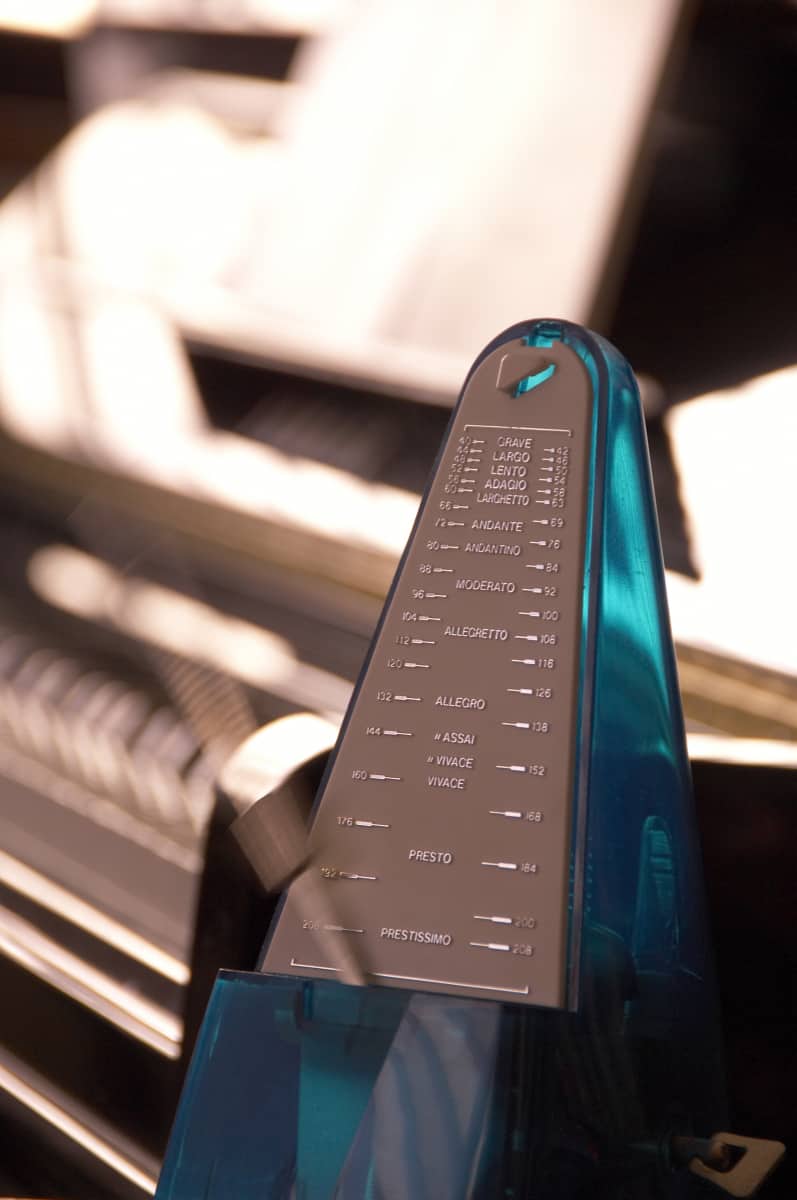How to Play Piano Faster
Many of us have watched an incredible piano playing performance and wondered if we could ever match that seemingly effortless level of playing skill. When the piano is played quickly, it can be an exciting experience for both the pianist and the audience alike. The best pianists can make faster playing look easy, but the reality is that it takes years of practice to reach that level of virtuosity. If you’ve ever wanted to play a piece at a faster tempo or you find that your playing is mired in a slower style, this is the article for you. Let’s take a look at some tried and tested techniques that will help you to speed up your piano playing without sacrificing on the quality of your playing.
Table of Contents
To Go Faster You Need to Start Slower
Before you can play your favorite pieces at a faster tempo, you will have to practice at a slower tempo. Think of the old idiom “Learn to walk before you can run” and you will have the right mindset to proceed. At first, this may seem counterintuitive, most people think that practicing at higher speeds is the key to success, but this is not true. When you can play a piece of music to a high standard at a slower tempo, you can increase the tempo gradually. But, if you can’t play that piece well at a slow tempo, there is little chance of success when you try and speed up your playing. Before you try and increase the playing tempo, really focus on the precision of your playing at the initial stages. It is only later when you are confident that you can play the piece well that you will be playing up to tempo, In fact, even at thiat stage you may still want to slow your playing from time to time to practice tricky parts of the piece.
Deliberate and Slow Practice is the Key to Success
When a pianist starts to play at a faster tempo, their playing tends to get messy in short order. At a higher tempo, we tend to overlook mistakes, our technique gets sloppy and all rhythmic integrity is lost. So, it’s important to practice in a very methodical way and really focus on precise playing. Developing precision and muscle memory will help you to play faster later when you gain confidence. It’s natural to want to play faster, but you must force yourself to play slower at the earlier stages of your practice sessions. If you speed up too soon, all those little details that make the piece of music special can be lost. There are six key areas that you should focus on when practicing, they are:
- Make sure you’re phrasing and playing the notes with good musicality.
- Don’t leave out notes when you are playing the piece.
- Concentrate on playing every correct note.
- Ensure that your rhythms are precise.
- Pay close attention to any expression markings.
- Make sure you play with dynamics variations as needed.
Once you can meet these six components of any piece of music that you’re practicing, it’s time to go to the next step. It’s important to practice playing all or at least large sections of the piece with precision and continuity. Then, when you feel that the music is starting to flow naturally, you can start to push up the tempo gradually. If you notice that your playing starts to suffer, you need to slow the tempo down again. Pay attention to the parts that are giving you the most trouble and focus on getting those right at the slower tempo. Increase the tempo in very small increments to allow your playing to adjust to the faster tempo gradually.

Controlled and Relaxed Practicing
This may seem like a misnomer, after all, how can you be relaxed and maintain control at the same time? This is a vital skill to develop, but it may seem impossible for a new player to attain and it’s even harder when you’re playing a piece at a faster tempo. When a less experienced player attempts to play faster, they tend to tense up and this is reflected in the quality of the music. Over prolonged periods of practice, this tension can lead to fatigue, considerable discomfort, and even pain in your hands. In fact, many pianists experience this problem and some even sustain injuries when playing. However, if you are mindful of this issue it can be avoided with a good playing posture and a relaxed hand position.
For new players, it’s hard to imagine that you can be relaxed and fully engaged in your playing at the same time. The key is to avoid a lazy or limp posture when you sit at your piano. Finding the balance between being too relaxed and engaged with sufficient control and no tension can be hard to achieve. For many pianists, the tension begins in their shoulders, then down into their arms, and finally, it terminates at their hands and fingers. So, if you detect the early signs of tension in your shoulders, switch to a more relaxed posture and you may correct the situation immediately. Avoid hunching over the piano, don’t sit too close or at the back of your piano bench. Sitting too close or too far away can lead to back pain and if you are uncomfortable you will not play well. Many players are surprised about the improvement in their technique when they learn and adopt a good playing posture.

Playing with a Metronome
The best way to increase the tempo of your playing is to use a metronome. As an added bonus, this will also help you to keep a steady rhythm without speeding up or slowing down. Playing with a metronome at a slower tempo will help you to improve aspects of your playing and it’s easy to increase the tempo gradually. Start by establishing a base tempo that you can play without making too many mistakes. Then play along until you can play the piece consistently well at the base tempo which may take a short time, depending on your level of experience. Now you can increase the tempo in 2-4 beats per minute increments, and continue the process until you begin to struggle. At this point, you can slow the tempo back down and focus on the parts that are giving your trouble. Once you’ve practiced those parts, increase the tempo again and increase the tempo as needed.
To master playing a piece at a higher tempo, it may take hours of practice but the results are well worth the extra effort.

